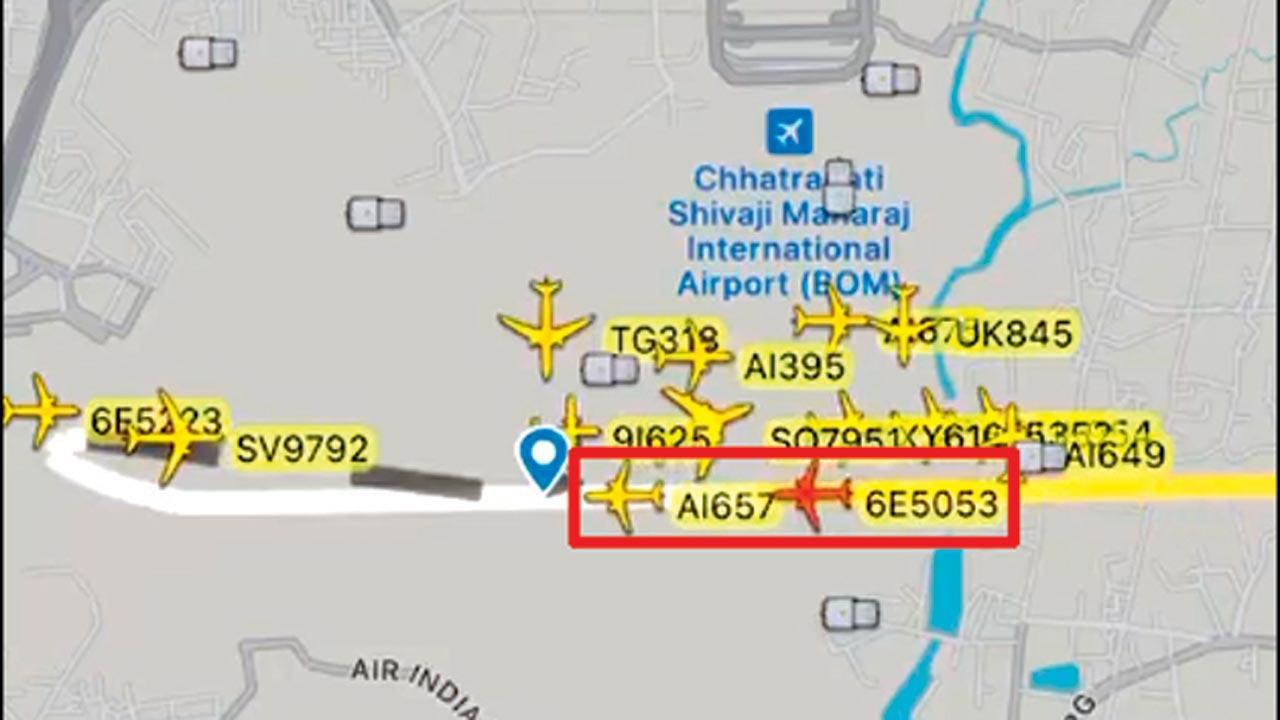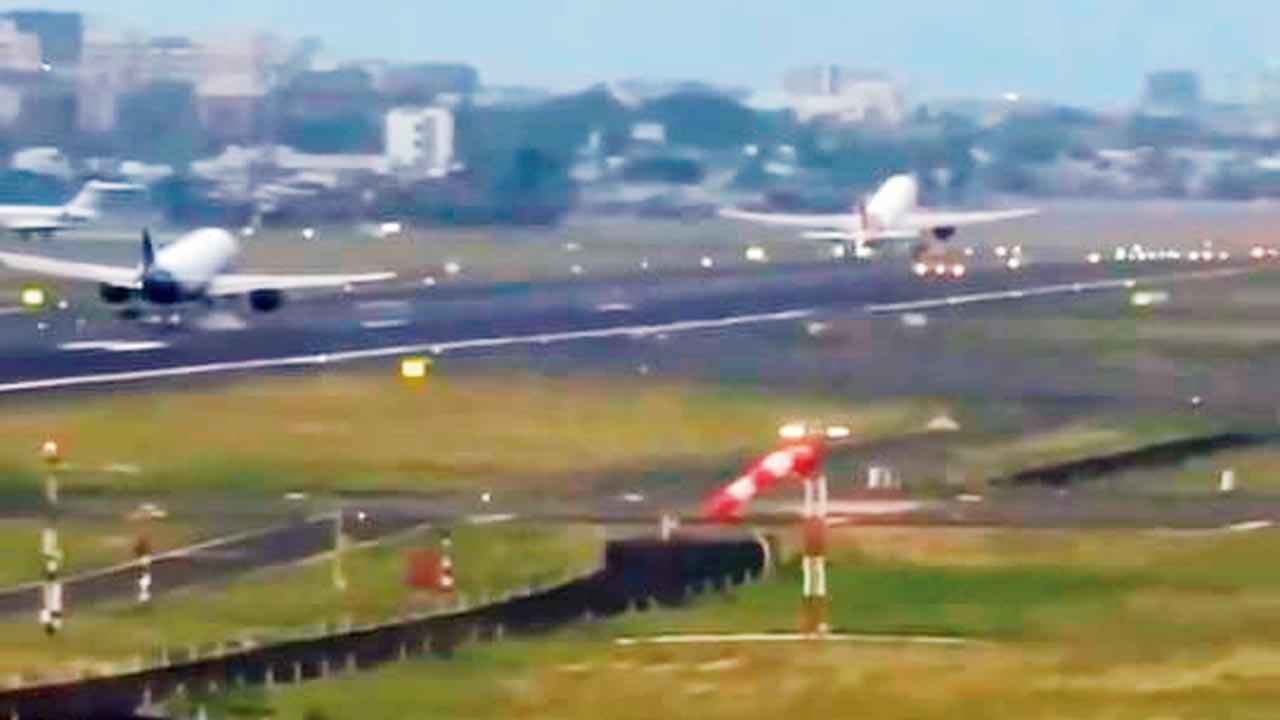Two Air Traffic Control workers have been derostered for allowing the two aircraft on same runway at same time

Flight radar graphic of both planes simultaneously on the same runway
In what could have been a major disaster, two aircraft were spotted simultaneously on the same runway at Mumbai airport. An IndiGo A320 was landing while an Air India A320 was taking off on the tarmac. The video went viral on social media and showed that the IndiGo aircraft had already landed on runway 27 as the Air India aircraft was in motion, preparing for take-off.
ADVERTISEMENT
The DGCA has taken cognisance of the matter and ordered a probe and stern action against the Air Traffic Controller for the incident.
Investigation:
What would have happened if the Air India pilot had decided to reject the take-off due to some technical reason?
“In this case, the Indigo aircraft would not have been able to slow down and would have collided with the Air India aircraft, causing a disaster on the runway as both aircrafts were filled with passengers,” said a senior DGCA official expressing concerns.
 Experts say the separation distance between both aircraft was very concerning
Experts say the separation distance between both aircraft was very concerning
An insider source from DGCA told mid-day, “The investigation’s findings are still pending, as the black box recordings and other factors need to be reviewed. However, preliminary observations indicate that the Air India aircraft had not reached V1 speed (the speed beyond which take-off cannot be aborted without overshooting the runway). This suggests that the take-off could have been aborted for any reason, causing a severe accident. Nonetheless, the Air India pilot is not at fault, as he had clearance for take-off. Moreover, the Air India pilot would not have been able to see the Indigo flight landing, as he was in the sterile phase of take-off procedures.”
“In the case of the Indigo aircraft, we are not yet sure if the pilot could not guess the standard separation between the aircraft. Since ATC did not pull up the pilot, the very moment it landed, it is to be assumed that the air traffic controller had cleared the Indigo aircraft for landing. Subsequently, as of now, the ATC staff involved in the incident has been derostered.” the source added.
Airlines speak
Air India in its statement, said, “AI657 from Mumbai to Trivandrum was on take-off roll on June 8. The Air India aircraft was cleared by Air Traffic Control to enter the runway and subsequently cleared for take-off. The Air India aircraft continued with the take-off movement in accordance with laid down procedures. An investigation has been initiated by the authorities to find out more on the clearance given to the airlines.”
“On June 8, 2024, IndiGo flight 6E 6053 from Indore was given landing clearance by ATC at Mumbai Airport. The pilot in command continued the approach and landing and followed ATC instructions. At IndiGo, passenger safety is paramount to us, and we have reported the incident as per procedure,” IndiGo said in a statement.
Aviation experts speak
A retired ATC official who had worked at Mumbai Airport told mid-day, “Usually, NOTAMs (Notice to Airmen) are issued for anticipated take-off and landing clearances. I also viewed the video and was shocked to see that the landing aircraft was given clearance. In such cases where one aircraft is on the approach and another is departing, usually, we controllers ask the aircraft taking off to expedite the take-off process so that the runway becomes cleared for the approaching aircraft.
However, the separation distance between both the aircrafts in this situation was very less which is concerning. Viewing the time frame the Air India aircraft was on the runway when the Indigo flight landed, I can conclude that the Air India aircraft had not crossed its V1. This could have caused a fatal accident.”
A senior staffer said, “An aircraft landing while another is on the runway is a serious incident. Things could have escalated very quickly if anything had gone wrong. The approaching aircraft could have even toppled if it had been caught up in wake turbulence created by the departing aircraft. This is exactly why standard separation rules are formed.”
What is wake turbulence?
While explaining wake turbulence in layman’s language, the senior staffer and flight instructor said, “Wake turbulence is a disturbance in the atmosphere that forms behind an aircraft as it passes through the air. It includes several components, the most significant of which are wingtip vortices and jet-wash (the rapidly moving gases expelled from a jet engine). Wake turbulence is especially hazardous in the region behind an aircraft in the take-off or landing phases of flight. During take-off and landing, an aircraft operates at a high angle of attack (the angle between the wings and the air passing over it). This flight attitude maximises the formation of strong vortices.”
 Subscribe today by clicking the link and stay updated with the latest news!" Click here!
Subscribe today by clicking the link and stay updated with the latest news!" Click here!







